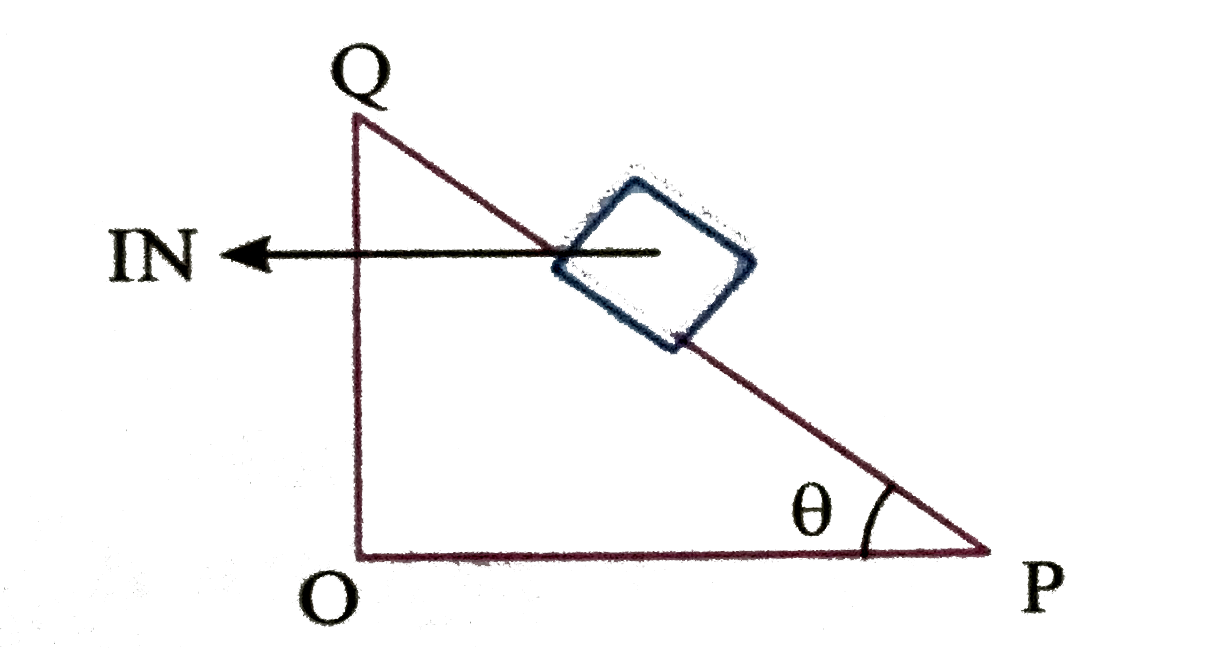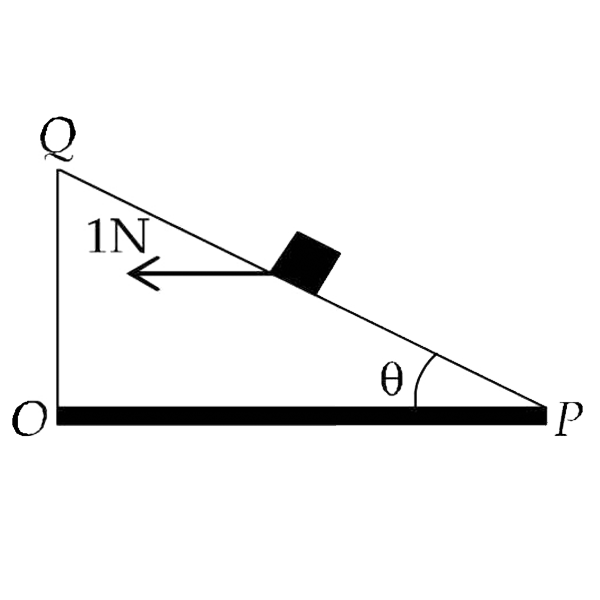A person pushes a block of mass 4 kg up a frictionless inclined plane 10 m long and that makes an angle of 30∘ with the horizontal . Then the work done is
33.5J
392J
339.4J
196J
The correct Answer is:D
To solve the problem of calculating the work done by a person pushing a block of mass 4 kg up a frictionless inclined plane that is 10 m long and makes an angle of 30 degrees with the horizontal, we can follow these steps:
Step 1: Identify the parameters
- Mass of the block (m) = 4 kg
- Length of the inclined plane (d) = 10 m
- Angle of inclination (θ) = 30 degrees
- Acceleration due to gravity (g) = 9.8 m/s²
Step 2: Calculate the vertical height (h) gained by the block
The vertical height (h) can be calculated using the sine function:
h=d⋅sin(θ)
Substituting the known values:
h=10⋅sin(30∘)
Since sin(30∘)=12:
h=10⋅12=5 m
Step 3: Calculate the change in potential energy (PE)
The change in potential energy (PE) when the block is raised to height h is given by:
PE=m⋅g⋅h
Substituting the values:
PE=4⋅9.8⋅5
Calculating this:
PE=4⋅9.8=39.2
PE=39.2⋅5=196 J
Step 4: Conclusion
The work done by the person in pushing the block up the incline is equal to the change in potential energy, which is:
Work done=196 J
Final Answer
The work done is 196 Joules.
---
- Mass of the block (m) = 4 kg
- Length of the inclined plane (d) = 10 m
- Angle of inclination (θ) = 30 degrees
- Acceleration due to gravity (g) = 9.8 m/s²
The vertical height (h) can be calculated using the sine function:
h=d⋅sin(θ)
Substituting the known values:
h=10⋅sin(30∘)
Since sin(30∘)=12:
h=10⋅12=5 m
The change in potential energy (PE) when the block is raised to height h is given by:
PE=m⋅g⋅h
Substituting the values:
PE=4⋅9.8⋅5
Calculating this:
PE=4⋅9.8=39.2
PE=39.2⋅5=196 J
The work done by the person in pushing the block up the incline is equal to the change in potential energy, which is:
Work done=196 J
The work done is 196 Joules.
Similar Questions
A block slides down a frictionless, inclined plane that makes a 30∘ angle with the horizontal. Find the acceleration of this block.
View SolutionA block A of mass 14 kg moves alongg an inclined plance that makes an angle of 30∘ with the horizontal . This block is connected to another block B of mass 14 kg by a taut massless string that runs around a massless frictionless pulley . The block B moves down with constant velocity . Calculate force of friction and coefficient of kinetic friction .
View Solution
Knowledge Check
A block of mass 2kg rests on a rough inclined plane making an angle of 30∘ with the horizontal. The coefficient of static friction between the block and the plane is 0.7. The frictional force on the block is
A10.3NB23.8NC11.9ND6.3NA block of mass 3 kg rests on a rough inclined plane making an angle of 30∘. With the horizontal. The coefficient of static friction between the block and the plane is 0.7. The frictional force on the block is
A9.8 NB0.7×9.8×√3 NC9.8×√3 ND0.7×9.8 N
A block of mass 2 kg rests on a rough inclined plane making an angle of 30° with the horizontal. If μS=0.6 , what is the frictional force on the block ?
View SolutionA block is placed at the top of an inclined plane 5 m long. The plane makes an angle of 60∘ with the horizontal. If the coefficient of friction between the wood and the plane is 0.3, find the time taken by the block of slide down the bottom of the plane.
View SolutionA uniform disc of mass m and radius R is rolling up a rough inclined plane which makes an angle of 30∘ with the horizontal. If the coefficients of static and kinetic friction are each equal to μ and the only force acting are gravitational and frictional, then the magnitude of the frictional force acting on the disc is and its direction is .(write up or down) the inclined plane.
View SolutionA block of mass 2kg rests on a rough inclined plane making an angle of 30∘ with the horizontal. The coefficient of static friction between the block and the plane is 0.7. The frictional force on the block is
View SolutionA small block of mass of 0.1kg lies on a fixed inclined plane PQ which makes an angle θ with the horizontal. A horizontal force of 1N acts on the block through its centre of mass as shown in the figure. The block remains stationary if ( take g=10m/s2)

View SolutionA small block of mass of 0.1 kg lies on a fixed inclined plane PQ which makes an angle θ with the horizontal. A horizontal force of 1N acts on the block through its centre of mass as shown in figure.

The block remains stationary if (take g=10m/s2)
View Solution
